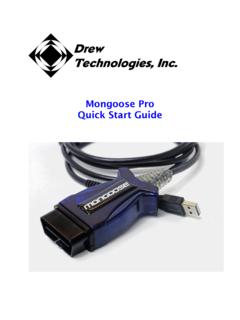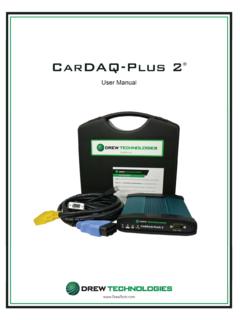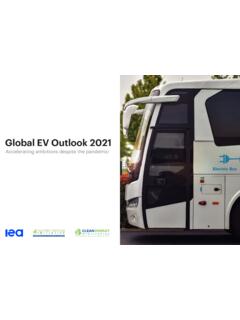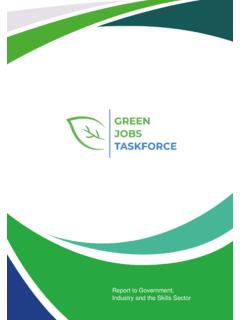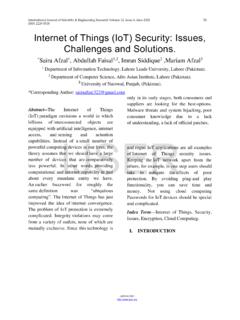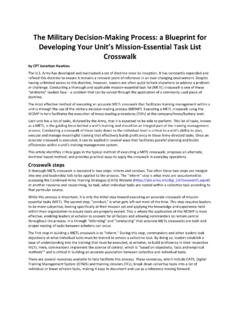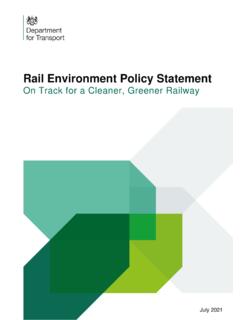Transcription of Introduction to J2534 and Flash Reprogramming
1 Drew Technologies, Copyright 2009 1 Introduction to J2534 and Flash Reprogramming Provided by: Drew Technologies Drew Technologies, Copyright 2009 2 Background The days of diagnosing and repairing automobiles without a laptop beside you are quickly fading. Newer vehicles include a large number of onboard computers that are each dedicated to performing specific tasks. Common onboard computers in newer vehicle include the Engine Control Module (ECM), Transmission Control Module (TCM), Fuel Injection Control Module (FICM), Anti-lock Brake System (ABS), Body Control Module (BCM) and numerous other control modules to manage every electronic system from power door locks to crash data. Each onboard computer is programmed at the factory with software enabling it to perform certain tasks.
2 Inside the ECM is software containing hundreds or even thousands of parameters to control spark, fuel, idle, cruising, emissions, economy, drivability, and performance. Likewise, a TCM will have software to control how the transmission and torque converter function. Sometimes, after the vehicle is shipped from the automaker, updates are released to improve emissions, fuel economy, drivability, performance, or specific bugs in the original software that have caused warranty issues. Updating this software can be a proactive fix because often it will resolve problems that a customer hasn t reported or noticed The practice of updating software in these modules is more commonly known as Flash Reprogramming . At new car dealerships, Flash Reprogramming is relatively straight forward because service technicians are connected to the automaker and have the expensive, specialized dealer service tools dedicated to Reprogramming .
3 The independent repair shops have faced a more difficult challenge because most shops typically service more than one make of automobiles. This increases the complexity, cost, and training required to operate dozens of different factory service tools. J2534 A Solution Arrives In 2000, the Environmental Protection Agency had been watching this issue and decided to take action. The EPA requested a standard be developed within the SAE that led to Show , a mandated specification to which automakers who sell vehicles in the United States must conform. The original J2534 specification was later updated to J2534 -1 in order to support all automakers. The EPA mandate requires automakers to support aftermarket repair shops with J2534 -1 Flash Reprogramming for any emissions related computer modules on a vehicle that can be reprogrammed by a new car dealership.
4 This mandate took effect for all 2004 and newer vehicles, but many automakers have decided to offer J2534 -1 support for vehicles older than 2004 and some vehicles as early as model year1996. J2534 -1 is a system devised of two independent parts: subscription software and a J2534 -1 compliant PassThru vehicle interface. The subscription software comes directly from Drew Technologies, Copyright 2009 3 the automaker, runs on your shop PC or laptop, and can either be web-based or CD-based. The subscription fees are charged differently for each automaker. Some automakers such as GM charge an annual fee for full access, while others have options for paying: per-vehicle, daily, weekly, monthly, or annually. Many of these services also include bonus features beyond Flash Reprogramming .
5 FMP from Ford lets repair shops reprogram transponder keys, and other automakers are beginning to support diagnostic functionality. Figure 1 shows the website for each automaker s service and fees. Hardware The second part of the system is a J2534 -1 compliant PassThru vehicle interface. This box or cable acts as a gateway between the vehicle s onboard computers and the technician s personal computer. It translates messages from the PC into the protocols used by the automobile and vice versa. A Drew Tech J2534 tool is pictured in Figure 2 to give you an idea of what a PassThru interface looks like. Common PassThru devices connect your PC to the vehicle using USB, serial, Ethernet, or wireless. The easiest to configure is probably USB, but Ethernet has the longest range and highest performance.
6 You can double the distances on USB connections by adding a hub between your PC and PassThru tool. Wireless has also become popular with both Bluetooth and options being offered by different tool vendors. The technology offers a higher bandwidth and distance range, but typically costs more than a Bluetooth option. Figure 3 illustrates the benefits of each connection type and highlights the option best for each characteristic. The CarDAQ-Plus from Drew Technologies ( ) and the E- Flash from ATS ( ) are currently the only PassThru tools offer Ethernet, USB, and an upgrade path to wireless all from one device. There are a number of PassThru tools for sale in the market, all at different prices with different features, performance, and customer support.
7 The primary function of a PassThru device is to support the automaker s subscription service for Reprogramming . Picking a device that is fully compliant to J2534 -1 is important, but many bonus features may make certain brands more attractive. Some offer additional features such as generic scan tool software, enhanced diagnostics software, and analog scope inputs. Performing J2534 Reprogramming requires computer knowledge and experience. The technician will need to operate a laptop or desktop, the PassThru device, and the Reprogramming software. Operation will also require a good high-speed connection to the Internet such as DSL, Cable, or T1. Non-compliant Devices Because J2534 -1 is an SAE standard, all PassThru tools should be the same; but in reality not all devices are fully compliant to J2534 -1 or work with all vehicles.
8 You should shop carefully when picking a device, and look at functionality and compliance before shopping on price alone. Be sure to get one that is guaranteed by the manufacturer to be fully compliant and that has been validated by the automakers you plan to service. None Drew Technologies, Copyright 2009 4 of the automakers sell their own PassThru tool, but many recommend products that they have validated internally. The SAE is planning to publish a conformance test. The conformance test has been named J2534 -3, and will be applied to J2534 -1 devices. The numbering is confusing, but remember that J2534 -1 is the standard for Reprogramming , and J2534 -3 tests for conformance to J2534 -1. There is even a J2534 -2 published spec, but that doesn t apply to EPA Reprogramming requirements.
9 Once the J2534 -3 test has been published, a tool manufacturer should be able to certify that their products pass the J2534 -3 test. The J2534 -3 conformance test has not been published yet, so for now you should look for devices that have been validated by the automakers. Many of the automaker websites in Figure 1 have a list of recommended devices. Of all vendors offering J2534 tools, at the writing of this article, Drew Technologies has been validated by more automakers than any other. ROI The initial purchase price for getting acquainted with J2534 will pay back over time and generate revenue. Although each price is different, the average software charge from each automaker is approximately $25 per Flash over time. The average revenue for shop service tickets that include a reflash is $150.
10 At four tickets per month, the shop would pay $100 in software fees and make back $600 in gross revenue. That equals $6000 per year in revenue. You will spend around $2000 on J2534 equipment up-front. If you use the tools you purchase and offer these services, the cost will pay itself back in a very short time. Onboard VS Offboard Onboard programming means that you are Reprogramming the vehicle s computer while it is installed in the vehicle and offboard Reprogramming means you are removing the computer from the vehicle and Reprogramming it from a bench top with a special cable and power supply. Figure 4 shows what an offboard Reprogramming bench may look like. There are some pre-made offboard cables available for certain vehicles, but there are literally dozens of different types of onboard computers, connectors, and pin diagrams.
